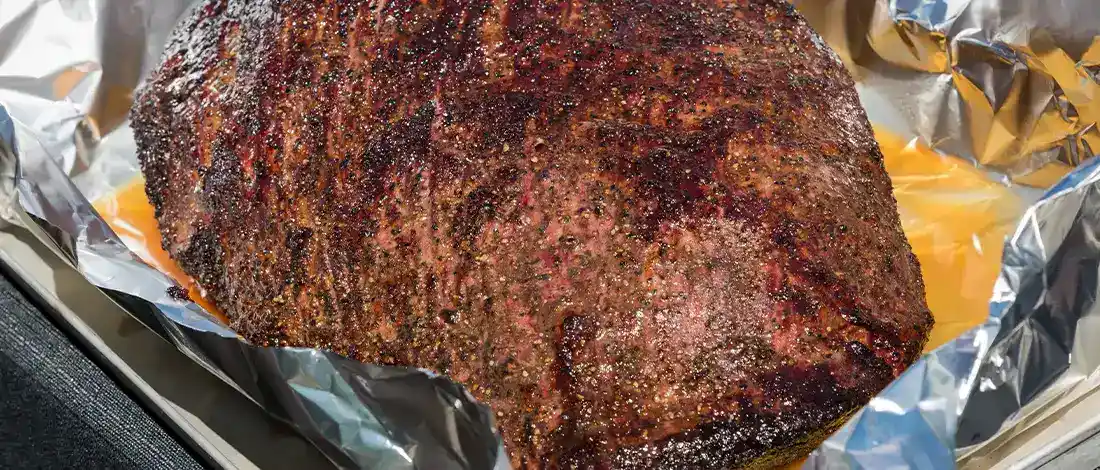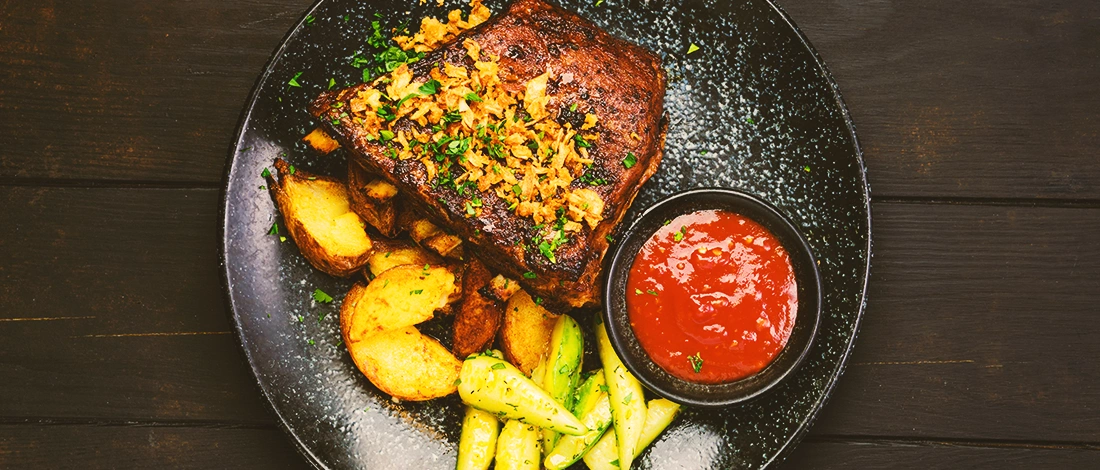As an experienced chef, I am always looking for ways to share my expertise with new practitioners of the culinary arts. One topic that often comes up is reheating steak.
When you have leftover steak from a previous meal, there are several ways to heat it so it is warm and tasty.
In this article, I'll explore five different methods for reheating this flavorful meat, from the classic oven to the trendy air fryer.
Quick Summary
- Leftover steaks can be reheated using different methods, including the oven, microwave, air fryer, stovetop, and sous vide.
- Reheating steak safely is crucial to avoid foodborne illnesses.
- Reheat cold steak within two hours of reaching room temperature, and never reheat it more than once.
5 Ways To Reheat Steak
There are multiple methods to reheat leftover steaks, such as utilizing the oven, microwave, air fryer, stovetop, and sous vide technique.

1. In the Oven

The oven is the best method for reheating steak, especially if you have a thicker cut. This is my favorite way because it retains the delicious flavor of the meat and keeps it as moist as when originally cooked.
Here are the steps for this reheating method:
- Remove the steak from the refrigerator before reheating it to let it come to room temperature.
- Preheat your oven to around 250°F, and after adding a little bit of oil or butter to the whole steak, place it on a wire rack in a baking tray.
- Cover the meat with aluminum foil to prevent it from drying out.
- Place the baking sheet with the covered meat in the oven and warm it for 20-30 minutes, depending on the thickness of the cut. Flip halfway through cooking.
- Use a meat thermometer to check the internal temperature. If necessary, continue to heat the steak at 2-5-minute intervals until it reaches the desired doneness.
- Remove meat from the oven.
- Heat a skillet on medium-high heat and add a bit of oil to it.
- Remove the foil from the meat and add your steak and sear it in the skillet for 1-2 minutes on each side or until it develops a crispy crust.
- Let the steak sit for five minutes before you slice and serve.
Done correctly, it will be hard to distinguish the leftovers from freshly cooked ones.
2. In the Microwave Oven

The microwave method is a quick and easy way to reheat steak, but it is my least favorite method as it can leave your meat a bit dry.
Here is how to avoid that outcome:
- Remove your steak from the fridge. Place it on a microwave-safe dish and cover it with plastic wrap or a damp paper towel.
- Microwave it on high for 30-second intervals until it reaches the desired temperature, flipping it at the halfway point.
- Be sure to use a meat thermometer to check your steak's internal temperature to avoid overcooking. This is important because overcooked meat can become tough.
- Before serving, it is crucial to let the meat rest for a few minutes. This resting period allows the steak's juices to redistribute.
- If you are reheating a large piece of steak, cutting it into smaller pieces may be helpful before microwaving. This will help to ensure that the meat heats evenly.
3. In the Air Fryer

When it comes to reheating meat, the air fryer method is an excellent option for those who want to enjoy a crisp, juicy steak without the added fat and calories of frying.
To reheat steak in an air fryer:
- Preheat the air fryer to 360°F.
- While the air fryer is heating up, allow the steak to come to room temperature by removing it from the refrigerator and letting it rest for approximately 30 minutes.
- Once the air fryer is ready, place the steak in the air fryer basket and cook for 2-4 minutes on each side for medium steak or until it reaches your desired internal temperature on a digital thermometer.
- If you prefer your steak less juicy and more well-done, cook it for an additional 1-2 minutes on each side.
When using an air fryer to reheat steak, look for one large enough to hold the meat without overcrowding it. Overcrowding the basket can prevent the hot air from circulating around the steak, resulting in uneven cooking.
4. On the Stovetop

If you want to warm a steak with the least fuss, the stovetop reheating method is your best bet.
The stove is a great way to reheat sliced steak or smaller cuts.
- Heat a cast-iron skillet over medium heat with some oil until hot. If the heat is too high, the steak's exterior will get a quick sear while the interior remains cold. You will not create a crispy exterior if the heat is too low.
- Place the meat on the pan and let it cook for 2-3 minutes, flipping it once using tongs. Use a meat thermometer to prevent overcooking.
- Once the steak is heated, remove it from the pan and let it sit for about 5 minutes before serving.
5. Reheating Steak by Sous Vide

Sous vide is a French term meaning "under vacuum" [1]. Sous vide is a method of reheating steak that involves placing the food in a sealed bag and cooking it in a water bath at a precise temperature for a prolonged duration.
This method is excellent for reheating meat because it slowly cooks the steak in its juices. It keeps the steak moist while ensuring maximum tenderness and flavor.
It is also harder to overcook the meat this way.
- Set the unit to 130°F for a medium-rare temperature or 140°F for medium rare.
- Once the water bath has reached the desired temperature and started to steam, the steak should be placed in an airtight bag and sealed.
- Place the bag in the water bath, and the meat should be left to cook for 45 minutes – 1 hour until heated.
- Once heated, transfer the steak to a plate and pat it dry with a paper towel before searing it in a hot pan with butter on the grill for a crispy crust.
4 Tips For Safely Reheating Steak

When reheating leftover steak in the oven, microwave, or any of the other methods, it's crucial to do it safely to avoid foodborne illnesses.
Here are some essential tips to keep in mind:
- The USDA recommends always using a meat thermometer to ensure your beef has reached an internal temperature of 165°F [2].
- Reheat steak within two hours of it reaching room temperature.
- Store leftover steak in an airtight container in the fridge if you plan to reheat it later.
- Never reheat steak more than once.
"Throw away all perishable foods that have been left in room temperature for more than 2 hours."
- U.S. Department of Agriculture
Related Article: Ways to Reheat Brisket
FAQs
Why Does Steak Taste Different When Reheated?
Steak may taste different when reheated due to the change in texture and moisture loss when cooking it the second time. To avoid this, it's vital to reheat the meat using the proper method and to follow tips for reheating safely.
What Can I Do With Leftover Steak That Is Tough?
You can use leftover steak that is tough in many different ways, such as slicing it thinly for a steak salad, chopping it for a steak sandwich, or adding it to a stir fry.
Can You Make a Cooked Steak Juicy Again?
Yes, you can make a cooked steak juicy again by adding a bit of extra fat, such as butter, and searing it in a hot pan for a short period.
References:
- https://www.webmd.com/food-recipes/what-is-sous-vide-cooking
- https://fsis-prod.fsis.usda.gov/food-safety/safe-food-handling-and-preparation/food-safety-basics/leftovers-and-food-safety








